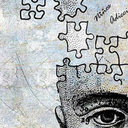Acute Aortic Regurgitation in the Current Era of Percutaneous Treatment: Pathophysiology and Hemodynamics.
Palabras clave
Abstracto
Aortic regurgitation (AR) is characterized by the backflow of blood from the aorta to the left ventricle. Acute AR typically causes severe pulmonary edema and hypotension, and is a surgical emergency. In chronic AR, however, compensatory mechanisms can clinically compensate for years, with normal left ventricular function and no symptoms. While the hemodynamic mechanisms of chronic AR on the left ventricle are well described, the hemodynamic mechanisms of acute AR are not clear. Most of the literature on acute AR includes either small series or case reports. During the past decade the number of transcatheter aortic valve replacements (TAVRs) performed has increased dramatically, and TAVR is now an accepted treatment option for patients with severe aortic stenosis who are not surgical candidates or are at high risk for surgery. However, potential acute mild to severe AR occurring after TAVR seems a new and common cause of AR. Since more than mild AR increases the risk of mortality, the quantification of AR severity is a major challenge after TAVR. More accurate, reproducible and quantitative criteria need to be developed to assess and highlight the unknowns of acute AR. Information relating to the pathophysiology and hemodynamics of acute AR and TAVR-related acute AR, respectively, are collated in this review.



